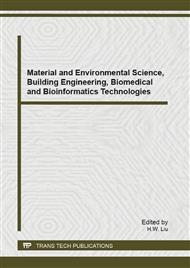p.497
p.502
p.506
p.510
p.515
p.525
p.530
p.535
p.539
Research on the Critical Attributes of Travel Mode Choice Utility Function
Abstract:
Since the urban traffic congestion becomes severe increasingly,the fundamentalsolution is reasonableallocation ofresources, and togive priority tothe development ofpublic transport carrying large capacity. Many scholars are researching how to attract travelers to give up the car and transfer to public transit. The problem is that what extents do the service attributes such as time costs and other change can lead travelers to the mode conversion. The utility function which depicts the probability of attribute parameters and selection probability must have a critical state causing the conversion. Account for this, the concept of critical expected utility is proposed, and gradient theory is introduced, combined with spatial analytical geometry method. Besides, by deriving method for solving the critical value based on the Probit model, depicts the dependency of the critical balance of each parameter. Finally, several strategies are proposed for a special line for Asian Games, and an evaluating indicator is designed for comparison and analysis, which has great impact on transport policy formulation and adjustment.
Info:
Periodical:
Pages:
515-521
Citation:
Online since:
September 2013
Authors:
Keywords:
Price:
Сopyright:
© 2013 Trans Tech Publications Ltd. All Rights Reserved
Share:
Citation:


